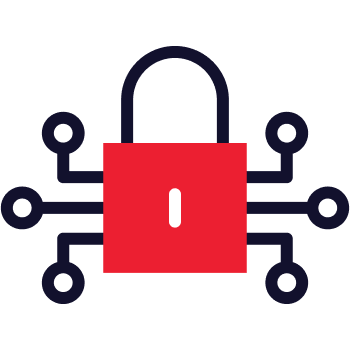Understanding the NIST Cybersecurity Framework (NIST CSF 2.0)

What is the NIST Cybersecurity Framework?
The NIST Cybersecurity Framework (NIST CSF 2.0) is a flexible, risk-based approach developed by the National Institute of Standards and Technology (NIST) to help organizations manage and improve their cybersecurity posture. Launched in 2023, NIST CSF 2.0 enhances the original framework by incorporating feedback from a wide range of stakeholders and addressing the evolving cybersecurity landscape.
Why is NIST CSF 2.0 Important?
- Risk Management:NIST CSF 2.0 provides a structured approach to identifying, assessing, and managing cybersecurity risks.
- Improves Resilience:The updated framework helps organizations enhance their ability to respond to and recover from cybersecurity incidents.
- Flexible and Adaptable:It remains suitable for organizations of all sizes and sectors, allowing for tailored implementation.
- Facilitates Communication:The framework provides a common language for discussing cybersecurity issues with various stakeholders, including management and boards.
Core Functions of NIST CSF 2.0
The NIST CSF 2.0 is built around five core functions, each reflecting critical cybersecurity activities:
1. Identify
Develop an organizational understanding to manage cybersecurity risk. This includes:
- Asset Management: Comprehensive inventory of assets that need protection.
- Risk Assessment: Identifying and analyzing potential risks and vulnerabilities.
- Governance: Establishing cybersecurity roles, policies, and responsibilities.
- Supply Chain Risk Management:Recognizing the importance of managing risks associated with third-party vendors.
2. Protect
Implement safeguards to ensure critical infrastructure services are delivered. This involves:
- Access Control: Managing user permissions and access to systems.
- Awareness and Training: Ongoing education for staff on cybersecurity best practices.
- Data Security: Measures to protect data integrity, confidentiality, and availability.
- Protective Technology:Implementing technologies designed to limit or contain the impact of potential cybersecurity events.
3. Detect
Develop and implement activities to identify the occurrence of a cybersecurity event. This includes:
- Anomalies and Events: Monitoring systems for unusual activities.
- Continuous Monitoring: Regularly reviewing security events to identify potential breaches.
- Detection Processes: Establishing and maintaining detection mechanisms to respond to incidents.
4. Respond
Take action regarding a detected cybersecurity event. This encompasses:
- Response Planning: Developing and implementing response plans for cybersecurity incidents.
- Communications: Establishing internal and external communication protocols.
- Analysis: Investigating incidents to understand their impact, origins, and necessary responses.
- Mitigation:Taking steps to contain and mitigate the impact of incidents.
5. Recover
Maintain plans for resilience and restore any capabilities or services impaired due to a cybersecurity incident. This includes:
- Recovery Planning: Strategies for restoring systems and data.
- Improvements: Incorporating lessons learned from incidents to enhance future response efforts.
- Communication: Keeping stakeholders informed during recovery efforts.
- Improvements:Ensuring continual improvement of recovery processes based on experiences and lessons learned.
Implementation Steps for NIST CSF 2.0
Implementing NIST CSF 2.0 involves several key steps:
- Assess Current State:Evaluate your current cybersecurity posture against the framework’s core functions.
- Define Target State:Establish a desired state for your organization’s cybersecurity practices.
- Identify Gaps:Determine gaps between the current state and target state.
- Develop Action Plan:Create a roadmap to address identified gaps, prioritizing based on risk and resources.
- Implement and Monitor:Execute the action plan and continuously monitor progress.
- Review and Update:Regularly review and update practices to adapt to evolving threats and business needs.
Benefits of NIST CSF 2.0
- Customizable:Organizations can tailor the framework to their specific needs and risk tolerance.
- Supports Compliance:Aligns with various regulations and standards, helping organizations meet compliance requirements.
- Enhances Security Culture:Promotes a culture of cybersecurity awareness and proactive risk management across the organization.
- Integration of Cybersecurity and Resilience:Addresses the interconnectedness of cybersecurity and organizational resilience.
Common Challenges in Implementing NIST CSF 2.0
- Resource Allocation:Limited budgets and personnel can hinder effective implementation.
- Complexity of Integration:Integrating the framework with existing security practices and tools can be challenging.
- Ongoing Maintenance:Continuous monitoring and adaptation are necessary to keep pace with evolving threats.
Conclusion
NIST CSF 2.0 provides an updated and robust foundation for organizations looking to improve their cybersecurity practices. By following its guidelines, organizations can better manage cybersecurity risks, enhance resilience, and foster a culture of security awareness.
Get Started with NIST CSF 2.0
If you’re ready to enhance your cybersecurity posture or need assistance implementing the NIST Cybersecurity Framework 2.0, our team of experts is here to help.